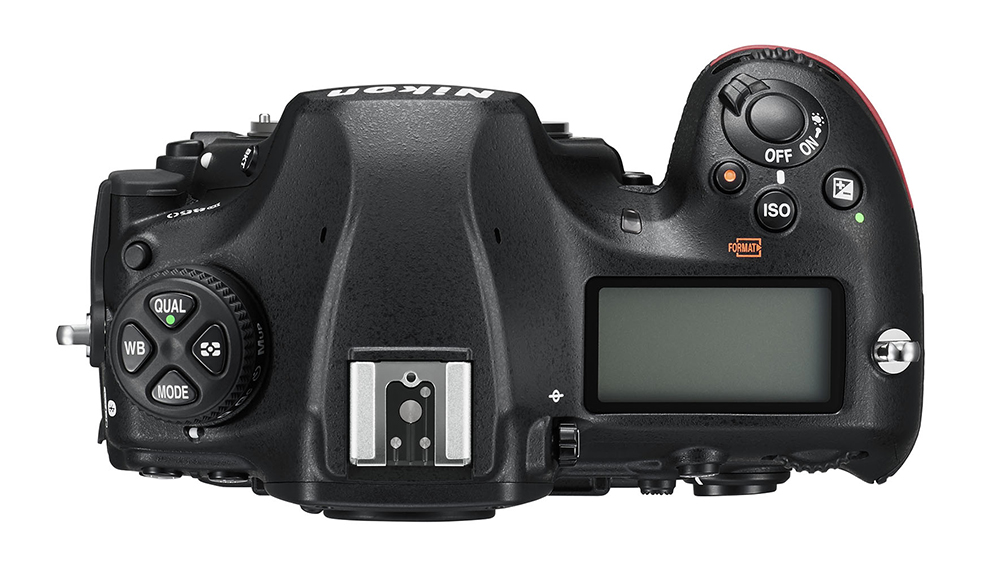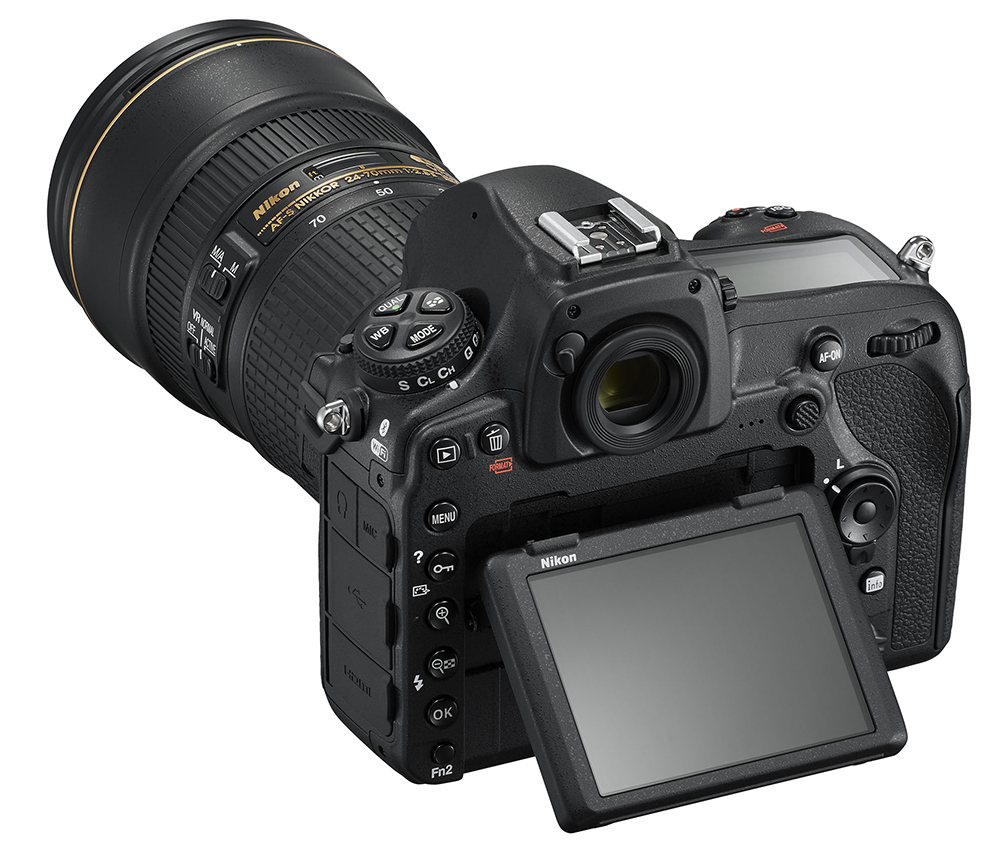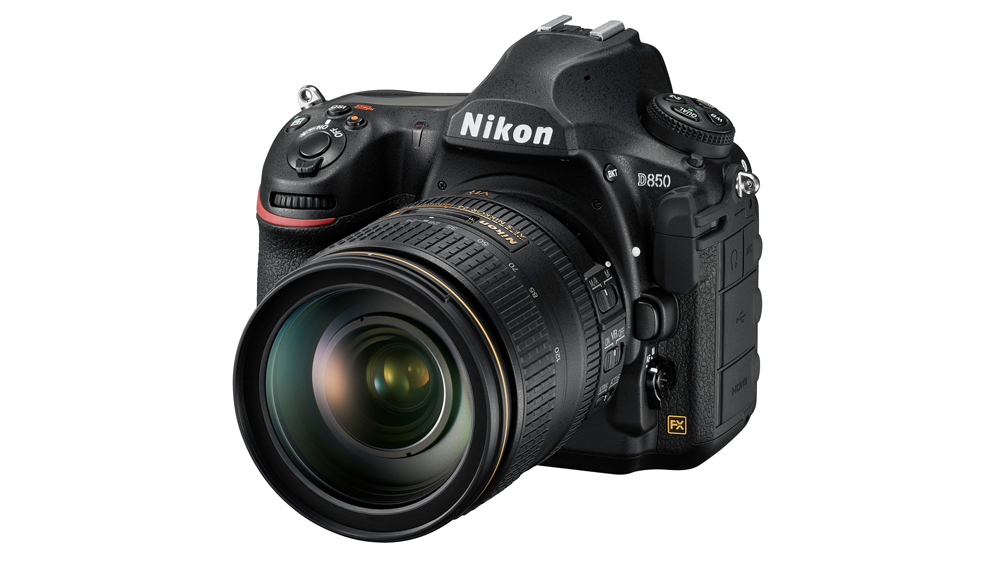High-Resolution, Full-Frame DSLR
Review by Steve Baczewski
The D850 is Nikon’s highest resolution DSLR with a 45.7 megapixel, full-frame, BSI CMOS sensor and an ability to capture detail that’s on par with larger sensors of medium-format cameras. Its lineage is from the 800, 810 series, and while some buttons have been relocated, and there’s no pop-up flash, the D850 will provide previous owners with a keen sense of familiarity. It’s not perfect: It’s big, heavy, and expensive, but you save on film, and it delivers. Quite the performer!
The weather-sealed magnesium body weighs over 2 lbs and, while weight might be an issue for some, the D850 has a deep-textured grip that provides a reassuring balance even when using large lenses.
The D850’s ability to record detail is in part due to the newly designed sensor, a new processor, and Nikon’s not using a low-pass filter—I never encountered a problem with moiré patterns. In addition, a menu feature called Fine Tune lets you optimize the focus of each lens for increased precision. The ISO range is 64–25,600, extendable to 32 and 102,400, and while noise is noticeable above ISO 3200, both Adobe Lightroom and Photoshop mop it up without losing detail.
 This DSLR camera is a solid performer whether you’re shooting landscapes, weddings, or sports. Particularly impressive for landscape photography is the color, detail, and dynamic range at ISO 64. If shooting moving subjects is a priority, whether keeping up with your dog or a bicycle rider, the D850’s high continuous AF records at 7 fps (9 fps with Nikon’s vertical grip), and it does a good job tracking. Shooting at low continuous AF has the added benefit of being able to select and control the shooting rate from 1–6 fps. A joystick has been added for quickly moving the focus point.
This DSLR camera is a solid performer whether you’re shooting landscapes, weddings, or sports. Particularly impressive for landscape photography is the color, detail, and dynamic range at ISO 64. If shooting moving subjects is a priority, whether keeping up with your dog or a bicycle rider, the D850’s high continuous AF records at 7 fps (9 fps with Nikon’s vertical grip), and it does a good job tracking. Shooting at low continuous AF has the added benefit of being able to select and control the shooting rate from 1–6 fps. A joystick has been added for quickly moving the focus point.
Nikon no longer uses compact flash cards; instead, the D850 has two memory-card slots specifically for SD or XQD cards. The XQD card reads and writes at 400 MB/sec and, when shooting at continuous bursts, I was able to capture approximately 40–50, 14-bit RAW files before filling the buffer. Quick note: I saw no appreciable quality difference when recording at 12-bit or 14-bit, or whether it was compressed or not.
The menu is long, comprehensive, and well worth taking the time to go over for maximizing the performance of the D850. The body has several customizable buttons that go a long way to help avoid scrolling the menus. Among the menu’s useful features are multiple exposure and time-lapse photography; however, there’s one feature that needs to be highlighted: Nikon names it Focus Shift, or what’s more commonly known as “focus stacking.” Nikon’s implementation automates what can otherwise be a tedious process and reduces it to a simple set of well-thought-out options. Focus Shift records multiple files at different focus points and, when combined in programs like Helicon Focus or Photoshop, the result is a single file with maximum depth of field. This is a great tool for landscape photographers who want to avoid diffraction; but it’s the holy grail for macro photographers who are constantly challenged by narrow depth of field when shooting at close camera-to-subject distances. Kudos to Nikon!

Composing with either the optical viewfinder or in Live View is very useful. The large, bright, optical viewfinder has a 0.75 magnification, 100% coverage, and all the pertinent shooting information is displayed along the bottom edge, making it easy to read. I became a big fan of the Nikon D850’s 3.2″ articulated, high-resolution, touchscreen LCD: It holds up well in bright outdoor light, and makes shooting above your head and from waist height practical. Particularly helpful in Live View is the ability to enlarge and assess image sharpness by using the playback magnification button, and when you add on Focus Peaking, the resulting precision is remarkable. I’m left scratching my head, however, wondering why Nikon doesn’t use phase-detection technology and instead relies solely on contrast detection for Live View.
Nikon’s implementation of its LCD touchscreen technology is notable. In playback mode, you can swipe to advance to the next file, enlarge images by spreading your fingers, and then navigate the enlarged view with one finger. In shooting mode, you can focus and trigger the shutter by touch and add in a time delay to avoid vibration. But perhaps best of all is the use of touch technology to quickly navigate the menu items, which adds a lot to the overall performance.
The D850 shines and reflects Nikon’s awareness and commitment to the needs of the professional photographer. ■







Hi, Love my 850, but I can’t get Focus Shift to work with macro flower shots. Any suggestions? Thanks.